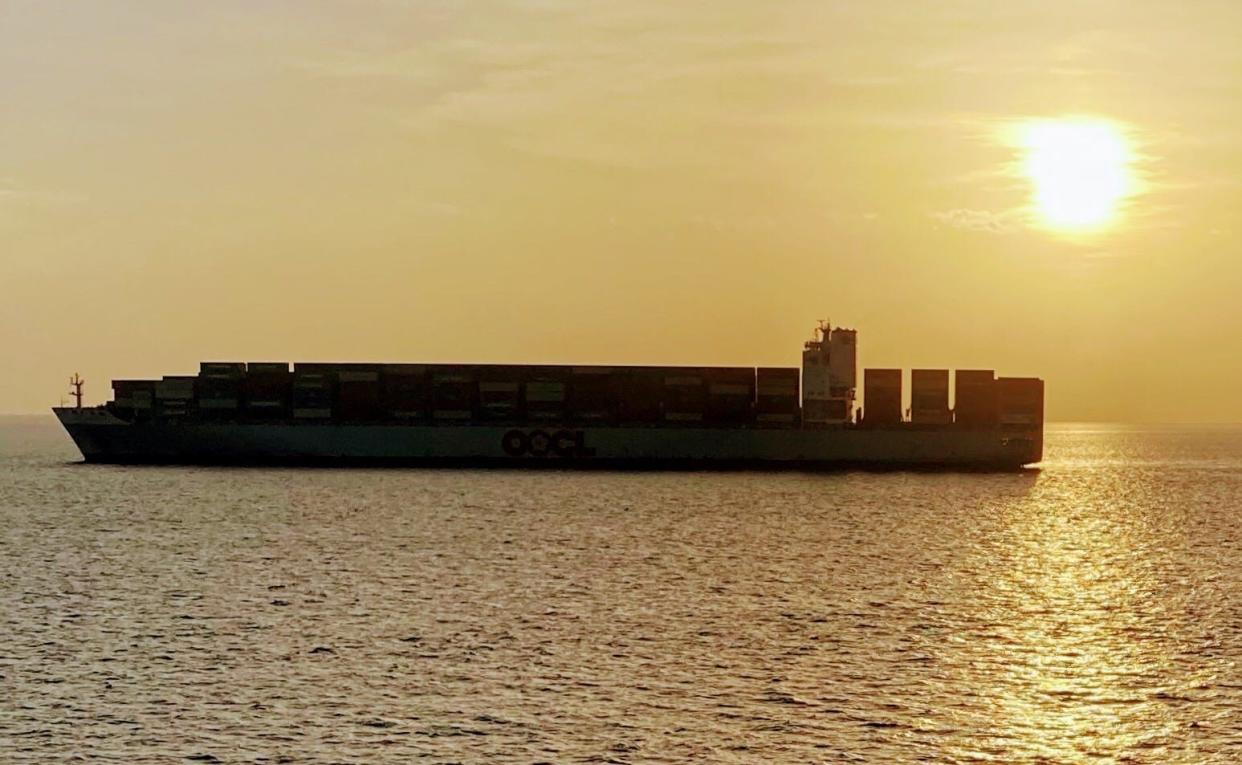Column: In light of Baltimore, let's look at safety with big ships at Port of Palm Beach

With the recent collision of a foreign flag container ship on the outer channel approach of Baltimore, it is worth reviewing hazards that exist in our own lake.
Large commercial carriers transit our own Lake Worth waterway on a 24/7 basis. Adding to the navigation risk is a lack of marine-capable fire boats, which would extinguish a maritime fire emergency.
Several years ago a 150-foot motor vessel — claimed to be owned by the former king of Spain — burned to the waterline at the Sailfish Club when local landside fire units were unable to control a fuel fire onboard. Only a shift in wind direction prevented sparks from spreading to the North End.
This foreign vessel entered the Lake Worth Inlet with a fire in the engine spaces, called for assistance and docked at the first convenient large dock — the Sailfish Club. Our sailboat was at the same dock and received smoke and water damage.
In addition to the fire risk involved with large commercial vessels in our waterway, it is well-known that larger container vessels — such as those docking at the Port of Palm Beach — are unable to fully stop for miles even when set to emergency reverse engine. The cargo giants have no rudder control at slow speed and will hit whatever vessel, bridge or wharf that is on the course plot.
An analysis of Palm Beach port operations indicates that safety is not a high priority for commissioners. A cruise ship based in Palm Beach and operated by a predecessor company of the current cruise vessel ran aground on the south entrance jetty structure to Freeport, Bahamas, and was scrapped due to extensive hull damage.
Thirty-five bridge/ship collisions occurred in five years in U.S. waters, according to The Maritime Executive, a daily trade magazine. Regrettably, the Port of Palm Beach — in its strategic plan — has stated that they intend to have ships of up to 1,000 feet in length at a facility across from the North End of Palm Beach.
Is the port expansion a good idea for the residents of Palm Beach?
Many residents utilize small watercraft on the lake and around Peanut Island. Large commercial vessels transiting the Lake Worth Inlet often move at excessive speed and endanger swimmers, sailors and paddleboarders with bow wake and ship cavitation.
When challenged with complaints about port overdevelopment, the Port of Palm Beach strategic plan director recently told us: “You do not ride a bicycle on Interstate 95; you should not use small boats in the lake.“
This statement defines the port safety dilemma for all of us who live near large commercial ports. Whether in Chesapeake Bay, Long Island Sound. Nantucket Sound or Lake Worth, we need to define precise jurisdiction chart lines for recreational water users versus large commercial ship interests.
In the case of Lake Worth, it may be that we prohibit ships of certain size and tonnage from utilizing the Lake Worth Inlet and restrict Port of Palm Beach from expansion and also ban hazardous material handling — like the longstanding Turkish metal scrap yard at the Port Pier Number Two.
Our elected representatives — including the Palm Beach Town Council — need to put in place serious markers with county, state and federal governments to protect residents from a maritime casualty such as occurred in Patapsco River at Key Bridge.
W. Bradford Gary is director of Southern Ocean Research Company and a member of the Royal Society for Navigation.
This article originally appeared on Palm Beach Post: After Baltimore bridge collision, how is safety at Port of Palm Beach?

